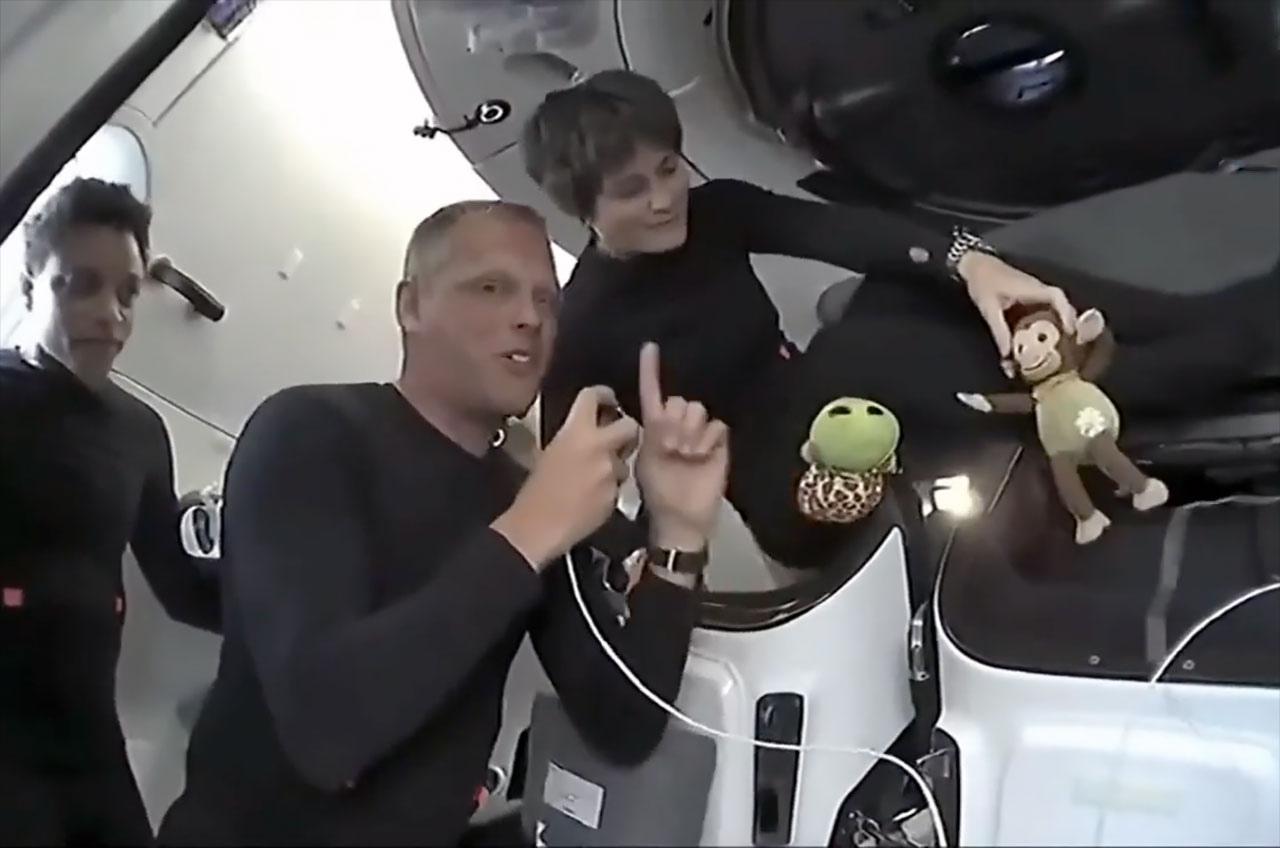What do you get when you cross a turtle with a chimp and send both into outer space? A whole lot of shenanigans.
Or at least that is the story behind the plush turtle and small monkey that launched with SpaceX’s Crew-4 astronauts on Wednesday (April 27). Both dolls began to float when the Dragon spacecraft “Freedom” entered orbit, about nine minutes after leaving Earth and 16 hours before arriving at the International Space Station.
“One of the questions we often get asked about is the significance of our zero-g indicator. It may look like we have two, but rest assured we have one,” said NASA astronaut Bob Hines, Crew-4 pilot, during a live broadcast from Freedom a few hours before docking.
Live updates: SpaceX’s Crew-4 astronaut mission for NASA
In pictures: Amazing launch photos of SpaceX’s Crew-4 launch
As Hines explained, the dolls were chosen by his daughter and the daughter of one of his crewmates, mission specialist Samantha Cristoforetti with the European Space Agency (ESA).
“My daughter chose ‘Zippy’ the turtle,” said Hines, referring to the youngest of his three daughters, Julia. “It’s one of her favorite and oldest stuffed animals. So we brought Zippy along for the ride,”
“And this is ‘Etta,'” said Cristoforetti, introducing the little monkey or “la scimmietta” in Italian. “Etta is the way my older daughter Kelsey used to call her [the doll] because she is Italian, she would be a small monkey, but when she was small she could only say ‘Etta’ and so that is what we call her.”
Etta was the first doll that Cristoforetti bought for her daughter, even before Kelsey was even born.
“So I was excited that she chose Etta to fly to space with us,” Cristoforetti said.
Beyond their personal stories, the toys also have a second meaning for the crew.
“[Crew-4 mission specialist Jessica Watkins] and I were in the 2017 astronaut class, and every class has a nickname, and we were known as ‘The Turtles,” said Hines. “So obviously Zippy is very near and dear to our heart as a turtle.”
“Kjell’s class from 2009 are known as ‘The Chumps,’ or ‘The Chimps,’ which is obviously a monkey,” Hines said, referring to Crew-4 commander Kjell Lindgren’s connection to Etta.
“And then Samantha’s class from the European Space Agency, they were known as ‘The Shenanigans.’ And, as everybody knows, when you get a turtle and a monkey together, that is a shenanigan,” said Hines. “So that is our single zero-g indicator that we have for our mission.”
The two-in-one approach was a new one for zero-g indicators flown on SpaceX missions to the space station, though it has been seen before where the tradition began — in Russia. The custom can be traced back to the first human spaceflight when Soviet-era cosmonaut Yuri Gagarin took a doll with him on Vostok I in 1961.
Since then, many Russian crew members (and later, their American and European crewmates) chose stuffed animals and other toys to suspend in their spacecraft.
Past zero-g indicators on SpaceX flights have included a plush planet Earth, a sequined dinosaur, Star Wars’ “Grogu” (or “baby Yoda”), a penguin and two plush dogs that doubled as fundraisers for children’s hospitals.
“Zippy,” as it happens, is the second turtle to fly. The Crew-3 astronauts, who Crew-4 are replacing on the space station, chose a sequined sea turtle, which like Zippy, was a reference to “The Turtles” astronaut class.
Zippy is also the second SpaceX-flown zero-g indicator to be made by Ty, the toy company of Beanie Babies fame. Part of Ty’s Beanie Boos line of dolls, Zippy was first produced in 2013. (The first zero-g indicator made by Ty was “Tremor,” the Apatosaurus.)
The make or manufacturer of Cristoforetti’s “Etta” monkey was not identified.
Follow collectSPACE.com on Facebook and on Twitter at @collectSPACE. Copyright 2022 collectSPACE.com. All rights reserved.

